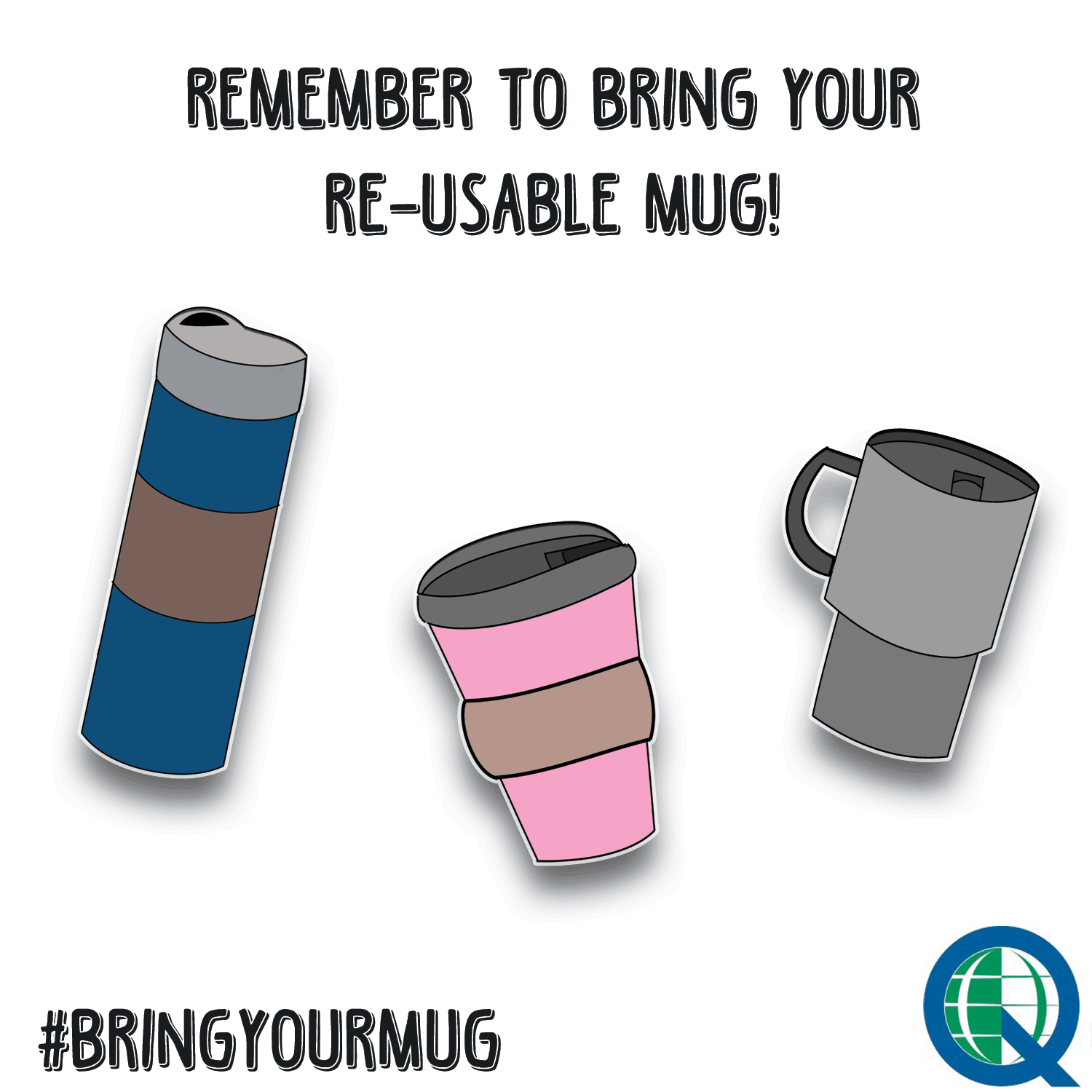From cups to filters, from stir sticks to sleeves, coffee comes with a lot of extras beyond milk or cream. It’s no secret that Canadians love their coffee. Each single-use cup becomes additional waste for the landfill because paper cups are garbage. Here are some popular discussions about coffee waste and what we can do to minimize our negative impact on the environment while continuing to drink coffee.
The Problem with Single Use Paper Cups
Paper cups end up in the landfill. This is due to a variety of factors. First of all the quality of paper with the inner lining of wax or plastic makes them difficult to recycle into other items. Another reason they can’t be recycled is because of the contamination left in the cups. When the sticky stuff doesn’t get rinsed out, it spills onto other items. Since recycling is a cycle, there needs to be an end goal for the material so they can be made into something new.

The paper sleeves are often recyclable as long as they are only made out of paper. Dark coloured lids, however, are garbage for the same reasons that other black plastics are garbage. When plastic reaches the end of its life cycle, it is dyed black in order to signify that it can no longer be recycled because it is a low quality plastic.
The best thing we can do is opt for reusable mugs. This way we stop adding to the pile of garbage at the landfill. Try to find ways to remember a reusable cup before leaving in the morning. Once it becomes a habit it won’t seem like so much trouble!
Some coffee shops are doing their part by offering a discount for customers who bring in reusable mugs. Other cafes provide compostable cups that claim to decompose quickly compared to regular single use paper cups. Every step towards lessening a negative impact on our environment goes a long way.
The Problem with Pods
The single use coffee pod debate has been ongoing since their beginnings on the market back in 2010. At a first glance, these pods seem to be a blessing with ease and efficiency as their claim to fame. However their original casing was not made of recyclable plastic. Within the past few years, companies began opting for polypropylene number 5 which is known for being recyclable. However, that doesn’t mean coffee pods can be accepted or reproduced into other items. These plastic pod casings are too small to be recycled and they fall through the sorting line and end up as garbage. Plus, there is usually a lot of contamination involved on the pod’s plastic outer casing. In order to recycle the outer casings of the pod, the foil has to be removed, the contents have to be dumped in the garbage or compost, and the plastic has to be cleaned. These steps are rarely executed properly, especially when keeping in mind that the point of the coffee pod is to be easier then brewing an entire pot (presumably with less mess as well).
Small plastic items are not great for the blue box. They often suffer with more contamination and the plastic is not always salvageable even if it is the right type of plastic.
What is the most environmentally friendly way to consume coffee?
Where composting is available, filters and coffee grounds can go in the green bin. Using the drip coffee method or a french press creates minimal waste without using electricity. These can be great options for camping or where electricity is not available. Other then that, purchasing coffee from a cafe and using a reusable mug or making coffee from a conventional coffee maker at home produces minimal waste. After all, the main source of the trouble comes from the cup.
Challenge yourself to get in the habit and #bringyourmug!

